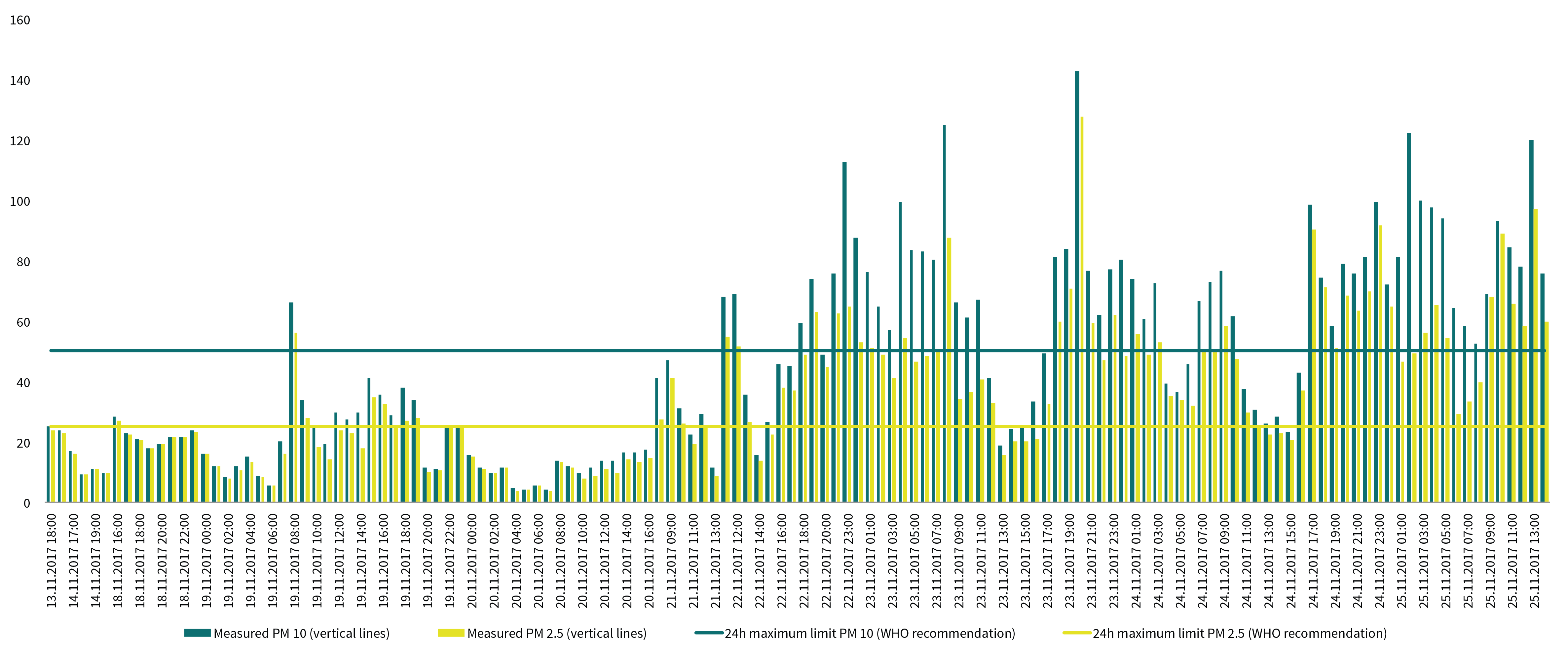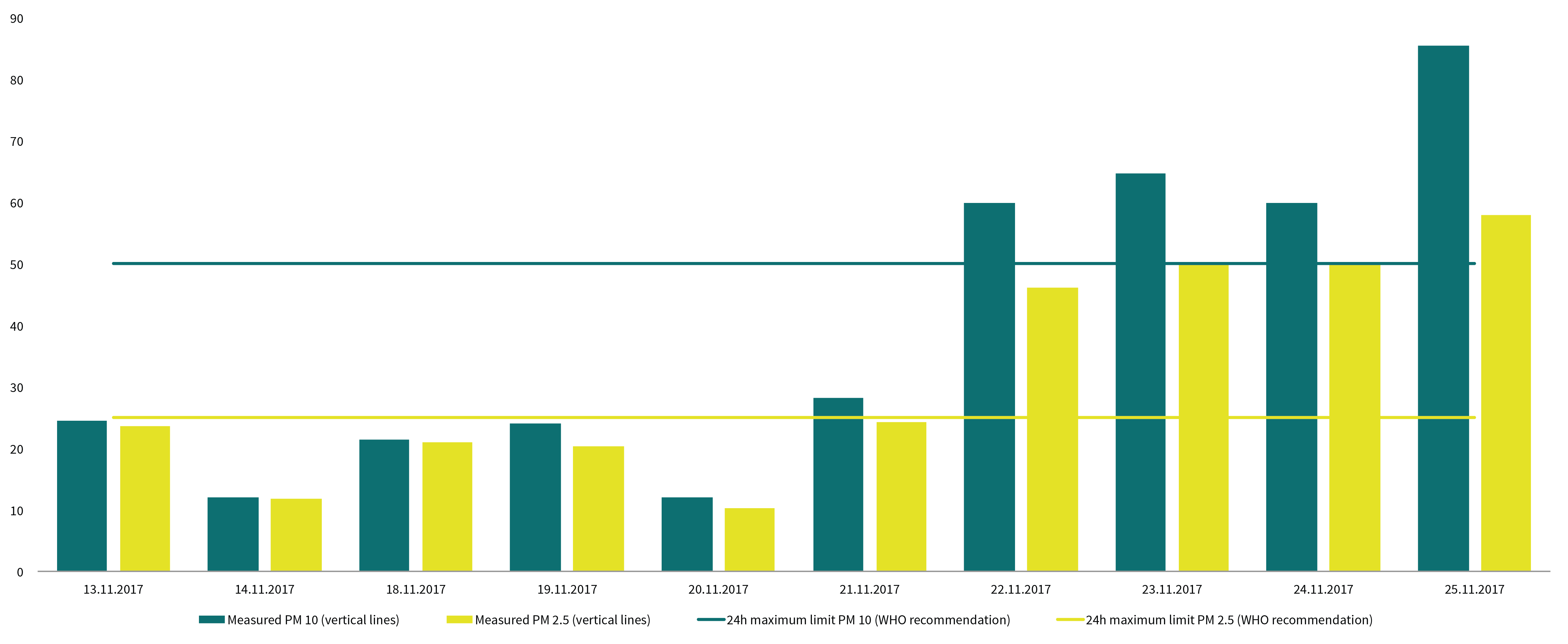Gacko, Bosnia-Herzegovina, is home to a coal power plant and an open cast mine and it has a serious smog problem. But you wouldn’t know it from official measurements because the local air quality rules are uniquely lax, and there are no publicly available, official measurements.
Ioana Ciuta, Energy Coordinator | 16 January 2018

I first visited Gacko in 2015, on a bike tour of Bosnia and Herzegovina. The day had started in Sutjeska National Park, with stunning scenery along the Sutjeska river gorge and nothing but the sound of nature around us, occasionally interrupted by the few vehicles passing by.
Nothing could have warned me of the bleak view of the town we would reach after a blissful 400 meters descent. Not just an old and smoky coal power plant appearing out of nowhere, but also a huge dusty open-cast lignite mine dominating the town.
I remember thinking how the geography of the place really doesn’t do justice to local community, because they are stuck with all the smog at the bottom of the valley. On that hot summer day the air was thick, but it must be unbreathable during the cold season, when temperature inversion keeps the layers of polluted air close to the ground.
Two and a half years later, it turns out my gut feeling was not that wrong. Data from the only air quality monitoring station in Gacko is very difficult to obtain. So local residents, or anyone concerned about the air quality in town, have no way of knowing how bad the problem actually is in real time.
In November 2017, Bankwatch and partner NGO Center for Environment from Banja Luka brought our independent dust particle monitoring device to Gacko. It remained there for almost two weeks, between 13 and 25 November, at a time we expected air pollution levels to be rather high.
In the first half of the monitored period the results did not raise any concerns, with the exception of a spike in emissions on 19 November at 8:00 (see hourly measurements below).
 Three such emission peaks stand out in the graph above: on 22 November at 23:00, the following morning at 8:00 and the absolute highest, on 23 November at 20:00. Our analysis, based on wind direction at these times, leaves no room for doubt that the first pollution spike, on 22 November, originated at the local coal-fired power plant, the second at the coal mine, and both the power plant and mine were the source of the peak on the evening of 23 November.
Three such emission peaks stand out in the graph above: on 22 November at 23:00, the following morning at 8:00 and the absolute highest, on 23 November at 20:00. Our analysis, based on wind direction at these times, leaves no room for doubt that the first pollution spike, on 22 November, originated at the local coal-fired power plant, the second at the coal mine, and both the power plant and mine were the source of the peak on the evening of 23 November.
The apparent within-limits values during the first half of the monitored period can be explained by the weather conditions in Gacko on those days. Snow was just settling in on the day of the installation of our air quality monitor and remained throughout the following week. While we hear quite often that precipitation “washes away pollution”, its effect is really that snow (or rain, for that matter, just for shorter periods of time) makes the ground wet which makes it harder for dust to get picked up into the air again.
Yet, on a dry day, particulate matter would settle on leaves, rooftops or the ground, and get kicked up again when the wind blows. So the snow in Gacko that week offered only a temporary reprieve. Once the particle trap melted, the real face of air pollution became obvious. Daily emissions of PM2.5 – the more dangerous of the two pollutants, because it travels deeper into the lungs and persists longer – were constantly twice the WHO recommended limit for the 24h hour mean of 25 μg/m3.
The local air quality legislation, which should safeguard people’s health, is one of the reasons Gacko suffers bad air. The air pollution levels we recorded are in fact within Republika Srpska’s limits [PDF]. But these very same laws set the maximum yearly average for PM2.5 at 15 times the level recommended by the WHO. This is why we chose to refer to the latter, as the international benchmark, to assess air quality in Gacko.
Common problem, measured differently
Throughout last year, our independent air quality monitoring device has travelled across four other Western Balkan countries, all of which have different PM maximum limits in their national legislation, but nothing as lax and health-endangering as those in Republika Srpska.
For PM10 there seems to be an understanding in all national legislations that the daily average should stay around 50 μg/m3. One exception is Bosnia’s other entity, the Federation of BiH, where this limit was at 62.5 μg/m3 in 2017.
But for PM2.5 the situation is very mixed. Countries like Montenegro and Macedonia have adopted EU standards in their legislation capping the annual average at 25 μg/m3, and Serbia has an even stricter annual mean limit of 20 μg/m3, while the Federation of Bosnia and Herzegovina has no limit for PM2.5 pollution.
Seeing this, one must wonder who is this average year-round value for PM2.5 of 150 micrograms/m3 in Gacko made for, the people or the industry?
These differences in standards are just one of the reasons why we have repeatedly asked the European Commission to introduce air quality legislation into the Energy Community Treaty. Such a move would set the tone for a unified approach towards air pollution which affects tens of thousands of people in the Western Balkan countries every year.
Efforts in the EU to curb air pollution, finally visible after a decade of joint action, risk being thrown onto the rails unless close neighbours in the Western Balkans make this a priority as well.
Never miss an update
We expose the risks of international public finance and bring critical updates from the ground – straight to your inbox.
Location: Bosnia and Herzegovina
Project: Coal in the Balkans
Tags: BalkanCoal | Bosnia and Herzegovina | air pollution | air quality

